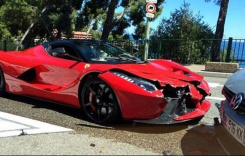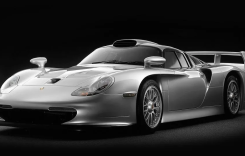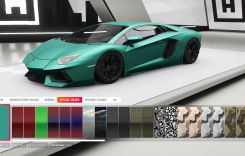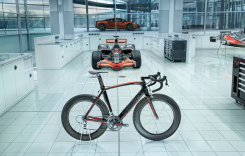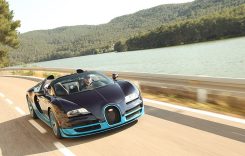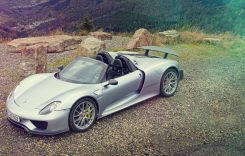Indian Motorcycle Co. made its intentions clear when it debuted the Scout. The company needed an introductory level bike – something quick, lithe, and low to the ground so it’d accommodate a wide swath of riders. It wanted something that paid tribute to Scouts of the past, without living in the past. Indian envisioned what the Scout would have become, had it been given the chance to evolve without an almost 70-year gap in production. And Indian had no qualms saying it had Harley’s Sportster in its sights.The 2015 Scout secures its own identity by eschewing a standard tubular frame, opting for one forged from cast aluminum. The shrouds housing the Scout’s radiator are incorporated into the frame casting. Engineers doubled its functionality by situating the saddle on the rear casting and bolting the back shocks directly to it. They threw conventional covers out the window, with machined cases in their stead. Love it or hate it, the fact Indian chose a clean slate for the design exercise was a refreshing twist from the cookie-cutter Harley clones others have been content to create.

At a glance, the Scout comes across as the smaller of the two. Maybe it’s the low 25.3-inch seat height. Maybe it’s the way there’s no wasted space in its design. But a peek at the spec sheet shows the Scout has a longer wheelbase, 61.5 inches to the Sportster’s 59.8, and is 3.4-inches longer overall at 91 inches. Both motorcycles run the same beefy tire profiles, 130/90 16 up front and 150/18 16 on the rear. Ditto on the exposed rear shocks, but the cant and compactness of the Scout’s set add to the illusion that it is a smaller bike.
After rumbling around the heavily congested streets of LA, we learn the 2015 Indian Scout is a proper city bike. Its bars are narrow and seat low, carrying its weight low and allowing for solid footing at a stop. When traffic bottlenecks and it becomes time to split lanes, the narrow design helps it dart and dodge in and out of rush hour. One drawback of its low stance is the sense that at times you’re looking up at cars you generally look down on or at eye level with on most other cruisers. Another is that around 75 – 80 mph riders take a lot of wind to the chest because for me at six-feet-tall I’m upright like a sail in the saddle reaching down to the bars. After a couple hours in the seat saddle-soreness sets in, particularly in the lower buttocks because of the lip formed at the back of the seat and the way it locks riders into one position.
“The Scout does feel a little on the small side, mostly in the tank and bar area. Around town it’s no big deal but when traveling on the freeway the lower tank and bars really come through giving the Scout a ‘minibike’ feel. The grips are rock hard. You don’t notice them much around town but on the freeway where you’re holding on a little more, the harder compound really starts to stress the hands,” said fellow tester Jason Abbott.

There’s more than the Scout’s agility in traffic that garnered our respect in the city. Drop the clutch on the Scout and this thing rockets off the line. It revs high so you’re not shifting a lot because you can wind it out a bit longer than the standard cruiser. During performance testing, Road Test Editor Adam Waheed left a 100-foot-long strip of rubber in first gear, putting a huge grin on the face of a speed demon who isn’t easily impressed by cruiser’s performance. Getting up to freeway speed, the Scout hit 60 mph 0.7-seconds faster than the Sportster. Its ride-by-wire system is calibrated spot-on, so as soon as the clutch is released it hooks and books. Granted, fueling isn’t as smooth as the Sportster, an observation supported by the bumpy torque line on our dyno graph. But a peak at that same graph also shows how much more revs the Scout has in comparison, further distancing it from the 1200 Custom. Indian geared its Scout accordingly. Few other pure cruisers, if any, top out at just shy of 90 mph in second gear. The Scout does.
“The engine is surprisingly powerful, it has plenty of get up and go at any speed and fairly smooth delivery throughout the powerband. Overall HP numbers and overrev are impressive. Unlike the Harley there’s little vibration from the counterbalanced engine and it has a very refined feel. Initial throttle is a little jumpy while traveling on the freeway but in the city and on the canyon roads the quick throttle response is something I enjoyed. There’s a light clutch pull and shifting is solid with a positive engagement. Engine design is on-point and its look is probably my favorite part of the entire bike,” said Abbott.

While we dote over the 1133cc mill, there are areas for improvement. Around 6500 rpm you do get vibrations in the bars. At idle and slow speeds, there’s a tat-tat-tat-tat sound coming from the engine that will grate on your nerves after a while but isn’t as noticeable at speed. It also had an issue feeding gas up when it gets below a gallon on a blistering hot day. It felt like it’s starved for fuel resulting in hard-starting during these conditions, sputtering and coughing before finally turning over. Until we hit the gas station, flow was a bit inconsistent.
In addition to engine performance, the 2015 Indian Scout also sees an advantage in handling. Action is lighter at the bars and the front doesn’t feel as heavy as the Sportster. Greater lean angles are also achievable. I believe Abbott nailed it on the head with his assessment:
“The chassis is solid, the frame has just the right amount of rigidity and there’s little vibration felt throughout the bike. Suspension has a balanced feel from front-to-rear. The fork has a plush initial and a stiffer mid-stroke that allows the front end to hold up better under braking and gives the fork more predictable action. Out back the shocks perform just as well and help to give the bike a balanced feel. The threaded shock bodies allow for a wider range of preload adjustment and fine tuning compared to the cheaper four-position shocks. Cornering is a strong point with the Scout as it feels very connected to the road. Even though the bike has a lower stance than the Harley it has more ground clearance in the turns.”
The 2015 Scout runs a comparable base braking package, with the single rotors front-and-back a touch smaller at 298mm. The Indian also has a single-piston caliper on the rear instead of the Sportster’s dual arrangement all the way around. As mentioned, the 1200 Custom we tested had the optional ABS package, a factor that contributed to it braking faster, the Sportster requiring 146 feet to go from 60-0 mph while the Scout required 151.4 feet. The front brake of the Scout lacks a little bite initially but once you get into the brakes there’s a strong feel through the lever and it does a good job of bringing the bike to a stop. The back brake has a strong bite even without ABS, but the rear end had a tendency to break free under hard braking.
For a first year bike, the 2015 Indian Scout is an impressive machine. From the spunk of its engine to its capable chassis, well-sorted suspension and slick gearbox, it exceeds what you’d expect from a “cruiser.” Sure, there’s room for improvement, but after riding the two motorcycles back-to-back, the Sportster feels dated. Kudos to Indian on this one because they nailed it out of the gate.

